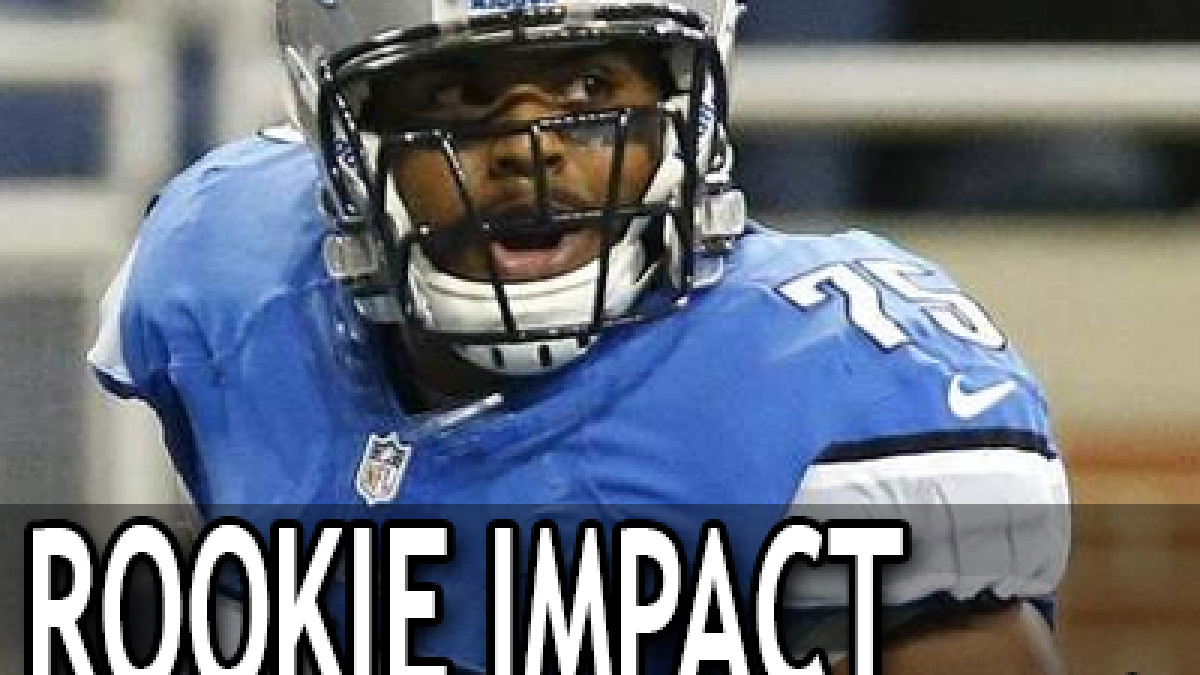 Training camps are opening, it’s getting close to the preseason which means bearing down on the horizon is the prospect of some real football at long last! What that means is we get a chance to see those rookies in action for the first time and start to form a picture of what type of player they will end up.
Training camps are opening, it’s getting close to the preseason which means bearing down on the horizon is the prospect of some real football at long last! What that means is we get a chance to see those rookies in action for the first time and start to form a picture of what type of player they will end up.
All this week we are breaking down what you can reasonably expect from your rookies by position by looking back at how each and every rookie has performed during the PFF era and plotting them on a graph.
First-round players get all of the column inches, but each year teams find players lower down the draft that will make significant contributions to wins. Today we’re looking at offensive guards. Not the most glamorous position in the league perhaps, but one that is vital to the smooth functioning of everything on offense.
So how can you expect your rookie guards to perform?
Guards
Staking Your Claim
Guard is a position that you can expect to see playing time early. If your team drafted a guard in the first round, history shows he is starting, bar injury. The same is largely true of second-rounders, though there will be rare cases where that player is seen as too raw to start right away.
Even lower down the draft you will find Day 1 starters. Last year’s PFF Rookie of the Year, Larry Warford, was a third-round pick and, even lower down, Carl Nicks and Jason Pinkston represent fifth-round players that started as rookies and played more than 900 snaps.
Guard also often finds an influx of players from the center position. Centers are essentially the quarterbacks of the offensive line and are often tasked with making line calls, handling the silent count and the added mental demand on them makes it rare for rookies to be able to handle it seamlessly right away. To adjust for that teams often give rookie centers their first playing experience at guard – giving them the chance to settle in the league and learn the offense before they are given control of things at center.
Due to the nature of offensive line play, a rookie is either starting or he isn’t, and the only gray area there is when injuries strike, forcing a player into the lineup from a backup position. Generally speaking the third round is where that cut-off mark is. First- and second-rounders start more often than they don’t while the third round features some starters but some players that only see playing time through injury or poor play to the starters in front of them.
Making Your Mark
Starting or not is one thing, but how can you expect that rookie guard to actually play once he does get on the field? The bottom line is that he is likely to struggle a little in Year 1. The average guard ends his rookie season with a -1.2 grade and even first rounders alone average just +1.8 to start their careers.
The real concern, however, is if your team is one that starts a guard from the second round. While first-rounders can hold their own and in some cases excel, the second round has seen no first year success stories during the PFF era. Chilo Rachal was the only second-round guard to perform above average with a +2.7 grade and the group averaged a -10.1 grade over the season.
First-round guards tend to avoid the struggles of their second-round counterparts. Though as a group they end up only just above average, the worst grade amongst them was Ben Grubbs’ -5.4 and there are a couple of excellent seasons from Mike Iupati (+16.4) and Kevin Zeitler (+14.3).
Lower down the draft, matching the logic of conventional wisdom for once, on average the lower down a guy was drafted the poorer his grade will be if forced to start as a rookie. Guys like Warford and Nicks are obvious but rare exceptions to that rule.
The Dream Scenario
When it comes to the dream scenario at most positions it’s a pretty simple one – a first round player that was instantly one of the league’s better at his position and only improved as time went on. For the guard position that would be Iupati, a dominant prospect who ended his rookie campaign 13th among all guards with some powerful run blocking.
I think, however, we can do a little better than that for our dream scenario. If there’s one thing better than your first-rounder justifying the hype it’s striking gold with a low-round guy. Warford and Nicks would be the two obvious examples. Nicks was arguably the more dominant player but didn’t really start until Week 4 of his rookie season. From that point onward, though, he was one of the best in the league, dominating and showing the kind of player he could be.
Warford, however, started from Day 1 and didn’t miss a snap of his rookie campaign, narrowly pipping Nicks in overall grade with the additional snaps. Both of these players had massive talent from the minute they got on an NFL field and we can only hope that Warford manages to avoid the injury woes that have struck Nicks since his move to Tampa Bay.
Follow Sam on Twitter: @PFF_Sam



 © 2024 PFF - all rights reserved.
© 2024 PFF - all rights reserved.